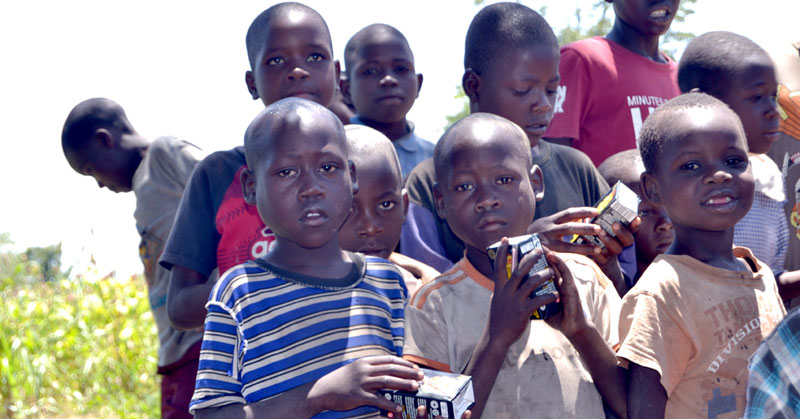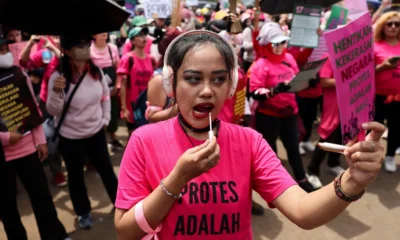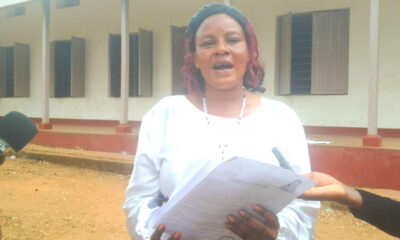human traffickingFeatures
Worries rise as children increase on city streets
The number of child mothers and children born on Kampala streets is increasing every month.
At least ten pregnant mothers are picked from the streets of Kampala City Council Authority (KCCA) streets every month according to child rights activists. This has put a lot of tension on KCCA, Kampala residents, its suburbs and market venders .
“We are worried about the increasing number of young girls with young babies coming on the city streets. In future these people are going to become more dangerous. We see a lot of killings and we have started to fear for our lives because these people have never experienced love at any time. We have institutions responsible for these kids but they have cared less for them,” Harriet Kakumba, a senior citizen and market vendor at Nakasero Market, said.
According to Rita Nkemba, the Managing Director of Dwelling Places, a local non-governmental organization (NGO), many young girls ran away from their parents and come to beg on the streets of Kampala. She says these girls get pregnant and are unable to attend ante-natal care, adding that most of them are picked by good Samaritans and taken to Dwelling Places where they deliver.
Nakawa Division Mayor, Ronald Balimwezo, puts this rapid increasing number of children on streets on many Government policies which have not benefitted the people equally. “This is a time bomb in Uganda, the country will soon face a crisis as most of the boys on the streets have turned into iron bar hit-men who terorise city residents at night and they are very dangerous since streets now have turned into breeding grounds for kifeesi.
And what worries me is, some of these children are being sponsored by some mafias who traffic them from their villages to use them to collect money as street beggars,” he said.
Balimwezo said that with 56% of 38 million of Uganda’s population being young people under 18 years; and 52% under 15, the greatest problem is that the children are now the single largest demographic group living in poverty in Uganda. This assertion is corroborated by civil society groups and local government officials.
Hamzah Kayongo, 14, one of the street boys found on William Street, told this reporter that he lost his mother whom he was living with in 2009 who died after government evicted her from the Naguru housing quarters where he was born.
With nothing left from him by his mother and with no known relative, the only alternative left for him was to join the ‘army’ on the streets. “Yes, I now belong to the streets though most people call us kifeesi or abayaye; some even go as far as beating us, especially the Police and KCCA enforcement officers, saying that we are the problem of the city yet we are also trying to survive.”
Kayongo says he escaped from Kampiringisa after realising the horrible conditions pertaining there which makes Kampiringisa, a torture chamber rather than a home for children. “Living on the streets is far much better than living in Kampiringisa, If I didn’t not escape from there may be I would be dead by now,” Kayongo haltingly says.
Prominent causes
According to Balimwezo, land displacement is now the major cause of children living on streets “When Naguru residents were displaced; only old people went back to the villages, most of the children remained on the streets or resorted to the slums some collecting scrap to earn a living. The same thing happened when the Government displaced people who were living on the Port Bell railway land. All these children are now on the streets.
“Government is happers taking care of foreigners: many refugees have come here and are catered for, but our own children are on the streets” Balimwezo complains.
Andrew Kabuye, a bodaboda rider in Mubende town, expressed his fear about the increasing numbers. “At the beginning of this year, Mubende town had only mad people on streets, but ever since the President’s executive orders to the artisans and miners of gold in Bukuya and Kitumbi to vacate the mines in July, Mubende has become home to many street children . True we had some street children before but now the numbers are bulging making this a threat to the town and its residents.
Ivan Lumbuye, a former civil servant, says that in July 2016, the Ministry of Gender, Labour and Social Development (MGLSD), established a National Children Authority to take care of those children with special needs, however the authority has entirely neglected the children on the streets, yet not all of them are criminals. He asserts that these children just need rehabilitation centres but those centers are no longer as functional as they were in the early 90s.
“Whoever went to the rehabilitation center came back and sateyd in society but these days its a a different case they become street kids. Of all revenue collected, the Government has failed to plan for these kids most of whom are from Karamoja. What is the Ministry for Karamoja doing if it has failed to take back these people and also provide them what to do in their homeland?” Lumbuye asked.
According to Balimwezo, the present key Government institutions to support these kids are totally used up and are inadequate to protect these children. Many local Government officials have put this cause to increasing poverty, both in rural and urban areas, which has forced careless parents, especially fathers, to neglect their responsibilities, giving their children ways to learn collecting scrap from where they start learning bad habits that lead them to admire the street life. And even some parents continue to send them to the streets since they come with some money.
According to the Human Rights Watch report, the MGLSD has always carried out a round-up all of these children when there is a special event, official visits and international conference. The collected children are detained in Police cells without any charge. This has created strong dislikes between the Police, Government officials, KCCA and these children.
Maria Burnett, a Senior Africa Researcher said, “Government should end arbitrary round-ups of street children, protect and also plan for them. According to the Child and Family Protection Unit (CFPU), the number of Ugandan children living on the streets is increasing though the total number is not known.
According to KCCA, the increasing number of street children in the city center is becoming unmanageable, where over 16 new street children come to Kampala streets everyday which has made the efforts by KCCA to round-up children and take them to Kampiringisa unnoticed.
Comments



























